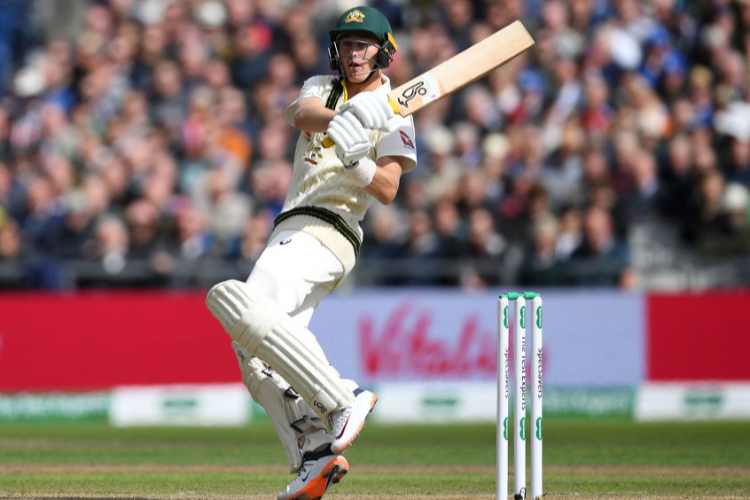3 minute read
Australia have England 2-17 in reply to their 9(dec)-473 after day two in Adelaide, with a late storm saving England from the last 45 minutes under lights.

Australia's pink-ball expertise has put them in the box seat in Adelaide, with only late rain and lightening saving England from further pain on day two of the second Ashes Test.
England went to stumps at 2-17 in reply to Australia's 9(dec)-473, needing a fighting effort to avoid going down 2-0 in the five-Test series.
It capped a big day for the hosts, after Marnus Labuschagne's first Ashes ton put them well on top, along with a classy 93 from Steve Smith and Alex Carey's maiden half-century.
Debutant paceman Michael Neser then claimed his first Test wicket off just his second delivery, while Mitchell Starc also struck after the pair had earlier rammed home Australia's advantage with the bat.
England were spared a further 45 minutes by lightning, flashing above Michael Neser's right arm as he sent a ball down to Dawid Malan, signalling an end to play.
But even in the 8.4 overs played under lights, the early damage had been done.
Much has been made of Australia's 8-0 record with the pink ball.
But the reality it is not so much their skill, but their experience in knowing how to structure and control the day-night game that has made them so dominant.
At times in the first day-and-a-half, it was evident they were batting for time as much as anything else.
David Warner's start to his innings was the slowest of his career, holding firm before finishing on 95.
Labuschagne's century was also his most watchful, lasting 400 minutes for a score of 103 that included three drops and a dismissal off a no-ball.
Smith was also patient on the opening day, before bursting to life on Friday and narrowly missing out on a 12th Ashes ton when he was lbw to Jimmy Anderson (2-58).
Finally, with the game well in their control, Neser (35) and Starc (39no) piled on 83 runs in 10 overs after tea against a weary attack to set up the declaration.
Australia would well know that the first innings of a pink-ball Test is the most important.
In the 16 played, the eight teams who have reached 300 in it have won. All who have failed to do so have lost.
Most crucially, a big first innings hands the team batting first control of when they will have the new-ball in hand.
And Australia's tempo ensured they had it at the right time - under lights and with the new ball seaming during the hardest time to bat.
"Certainly one of the the strategies and tactics is managing the night session and managing the tougher times to bat," Labuschagne said.
"If as a batting group you can get through a day, two, three or four down and you can have the opposition bat in that night session you can do some damage.
"Tonight we only had maybe 10 overs at them and we got two wickets. So it certainly seems to be doing a little bit more at night."
As has been the case in the past, Australia didn't waste it the night time opportunity.
Starc had Rory Burns caught at second slip for four, pushing at the kind of ball the England opener had watched Australia's bats leave for two days.
Jhye Richardson also had the ball moving, while Neser's first Test scalp came when Haseeb Hameed played in front of his body and pushed a catch to mid-on.
It put Australia even further on top, with the certainty that if England are still batting at twilight on Saturday they will again have a new ball to face.







